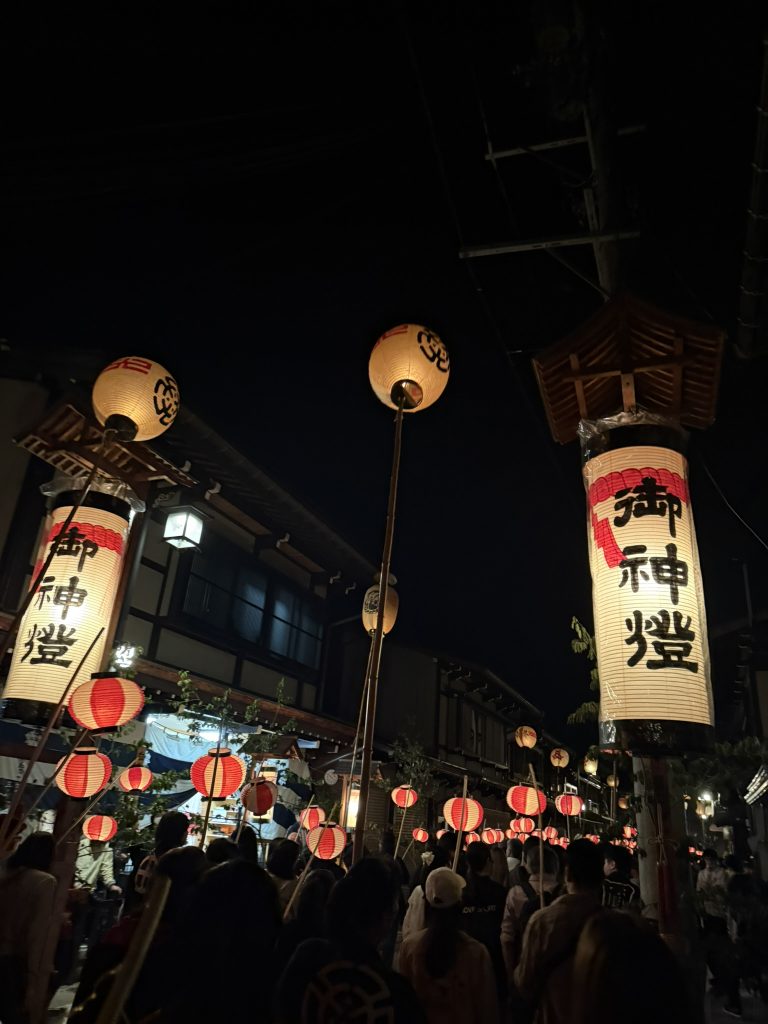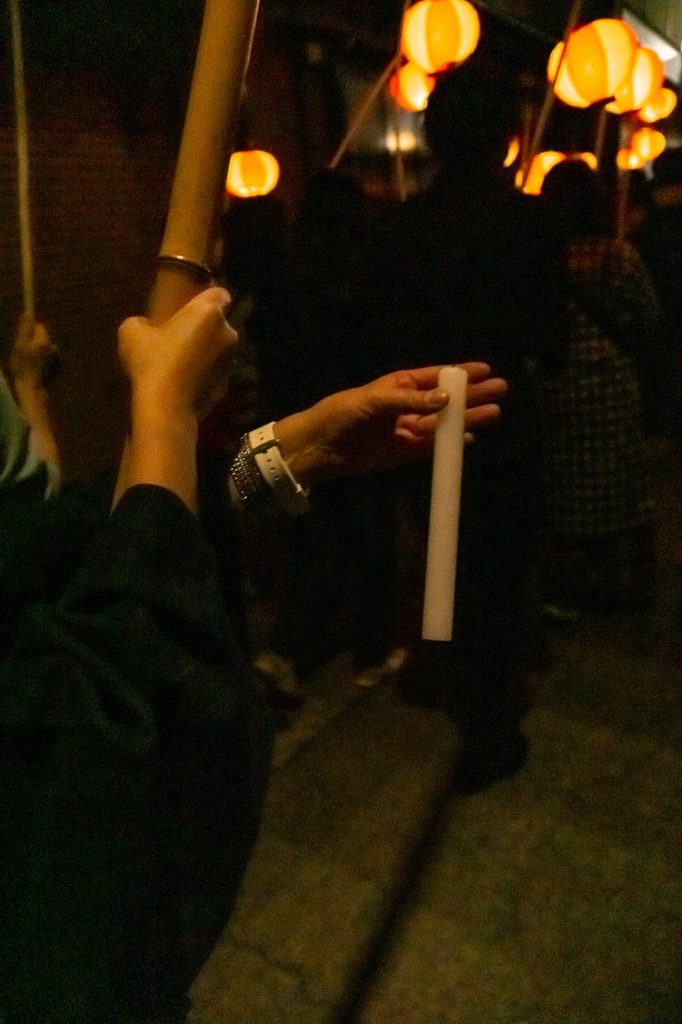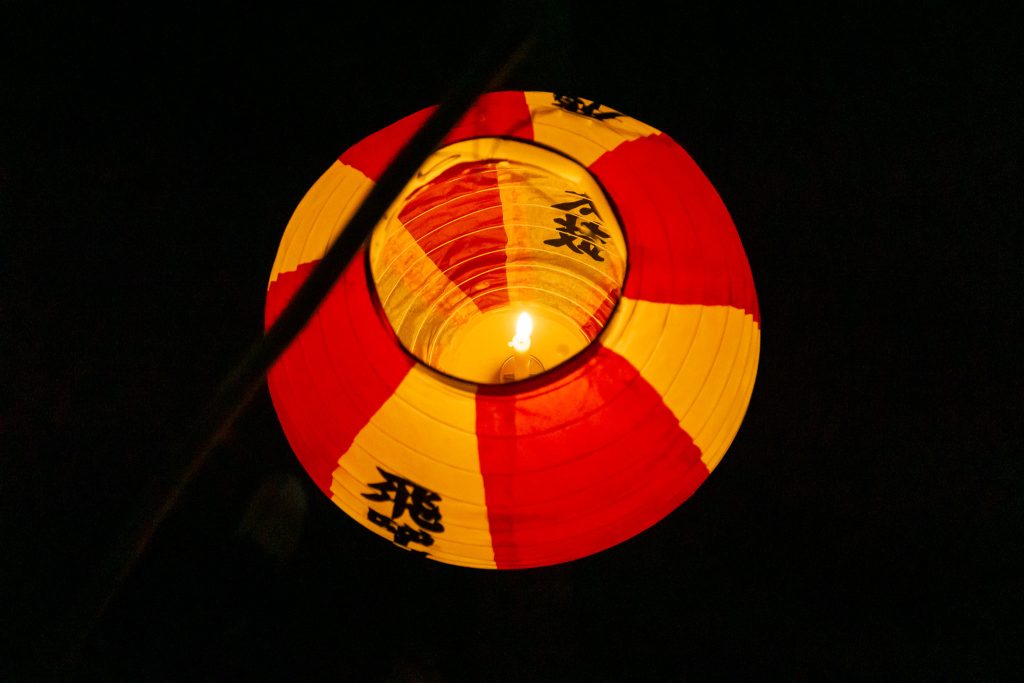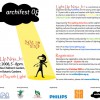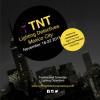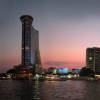2025.04.19 Hikaru Kimura + Noriko Higashi
When we first held a workshop in Hida Furukawa in 2023, city hall staff told us just how deeply the people of Furukawa cherish their festival. At the Hida Furukawa Festival Exhibition Hall, we were given explanations about the history of the festival and the stalls. We also had the opportunity to see the storehouses where each neighborhood keeps its stall, as well as the lantern stands placed in front of individual houses. This inspired us to head to Furukawa with the intent of exploring and documenting the festival scenes that are so important to the local people.
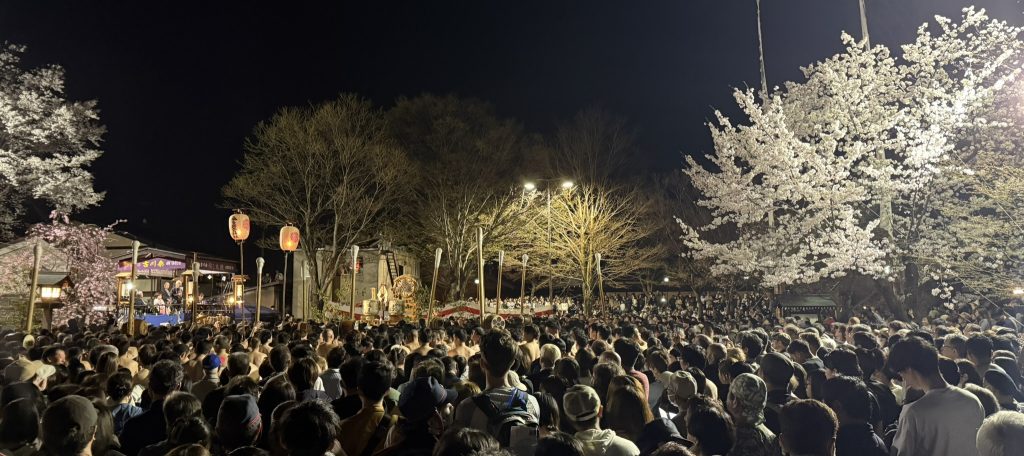
The Furukawa Festival, held annually on April 19th and 20th, is designated as a UNESCO Intangible Cultural Heritage and a National Important Intangible Folk Cultural Asset of Japan. It’s a community-wide celebration so deeply rooted in the town’s identity that even former residents living outside the area for school or work return home specifically for the festival. The event centers around two main elements: the “Okoshi Daiko,” a ritual where a giant drum is paraded through the town and beaten throughout the night, and the “Yatai Procession,” where each neighborhood pulls its own stall through the streets.
When we first visited Furukawa in April 2022 for a workshop, it happened to be just after the festival had ended. The excitement had slightly faded, and the town was in the midst of cleanup. During that time, we were guided by the mayor through the Hida Furukawa Festival Exhibition Hall, where we learned about the festival’s history and viewed actual festival floats. We even tried drumming the Okoshi Daiko ourselves and toured the storehouses where each neighborhood keeps its float. Everywhere we went, we could feel how deeply the people of Furukawa care about their festival. Even as first-time visitors, it was easy to understand how central the festival is to this town. We also learned about how the town’s two sake breweries play a key role in the festival and community life. Their sake is often used as a customary gift among residents, and during the festival, large amounts are collected and resold at lower prices, creating a cycle of joy and mutual support for residents, local businesses, and the breweries themselves. The festival not only fosters community interaction but also invigorates the local economy, making it an indispensable event for Furukawa.
Inspired by the mayor’s passion for the festival and the omnipresent traces of its significance throughout the town, we were eager to witness it firsthand. As soon as we received an official invitation from the city, Kimura and I immediately decided to take part in the festival. (Noriko Higashi)
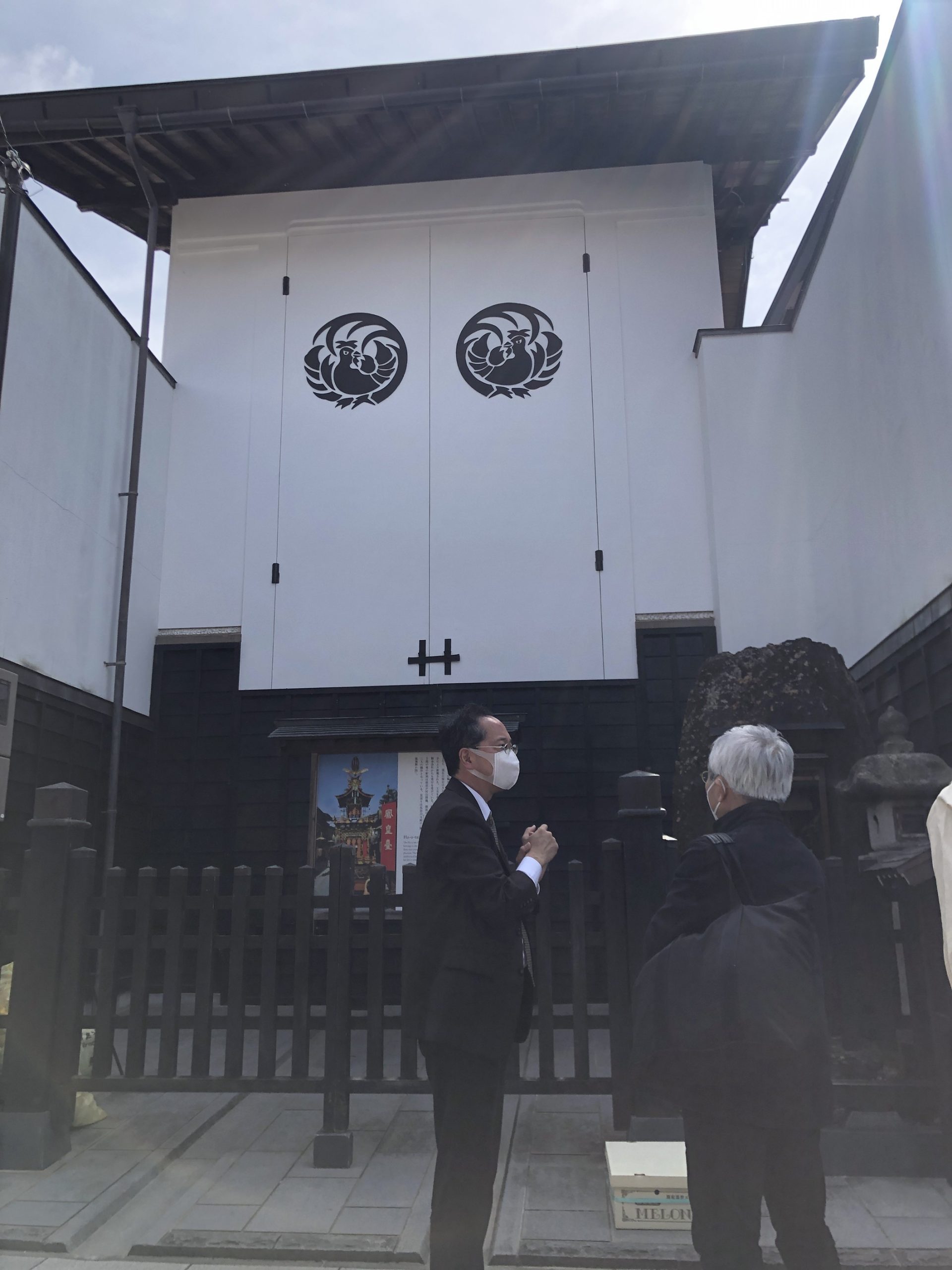
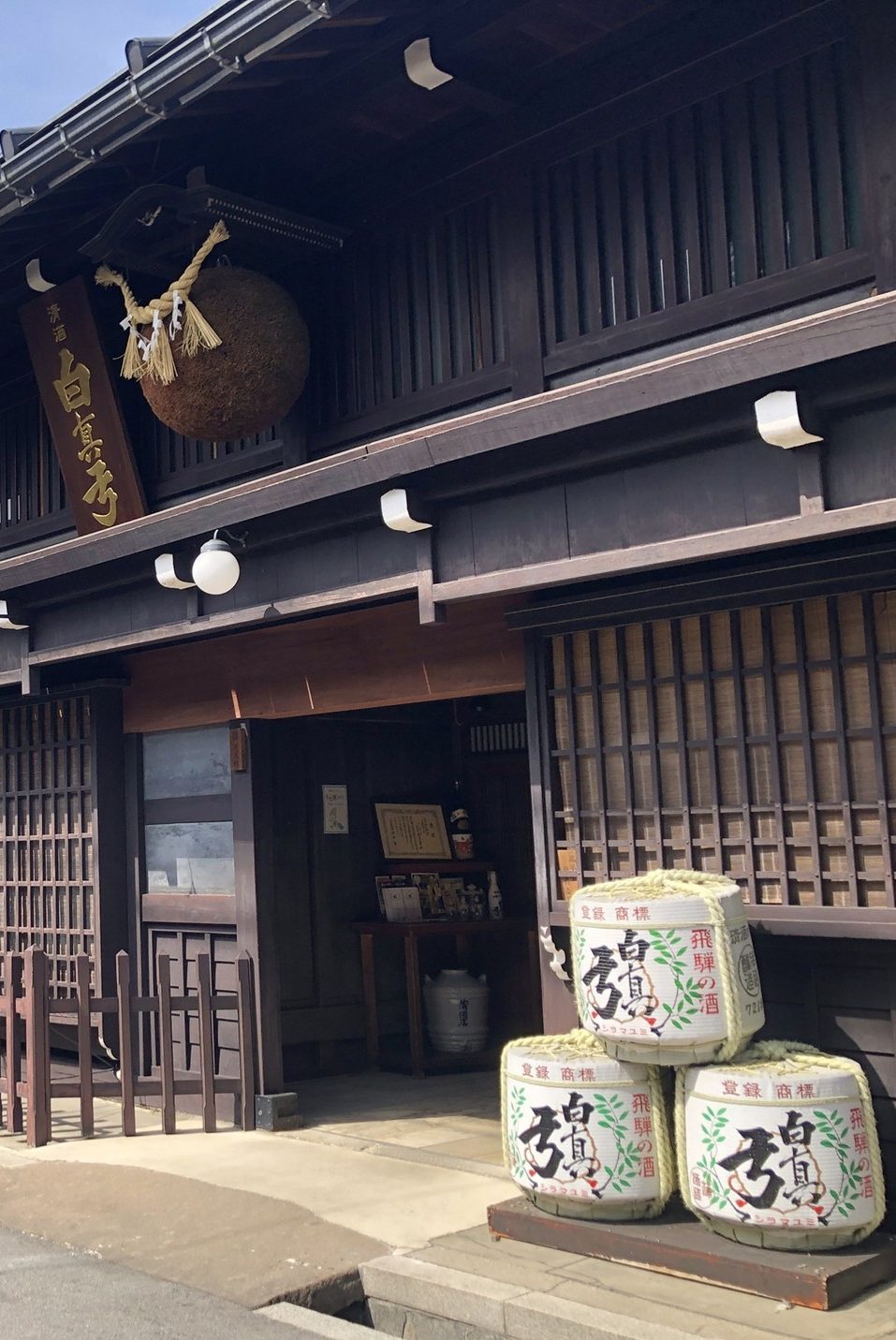
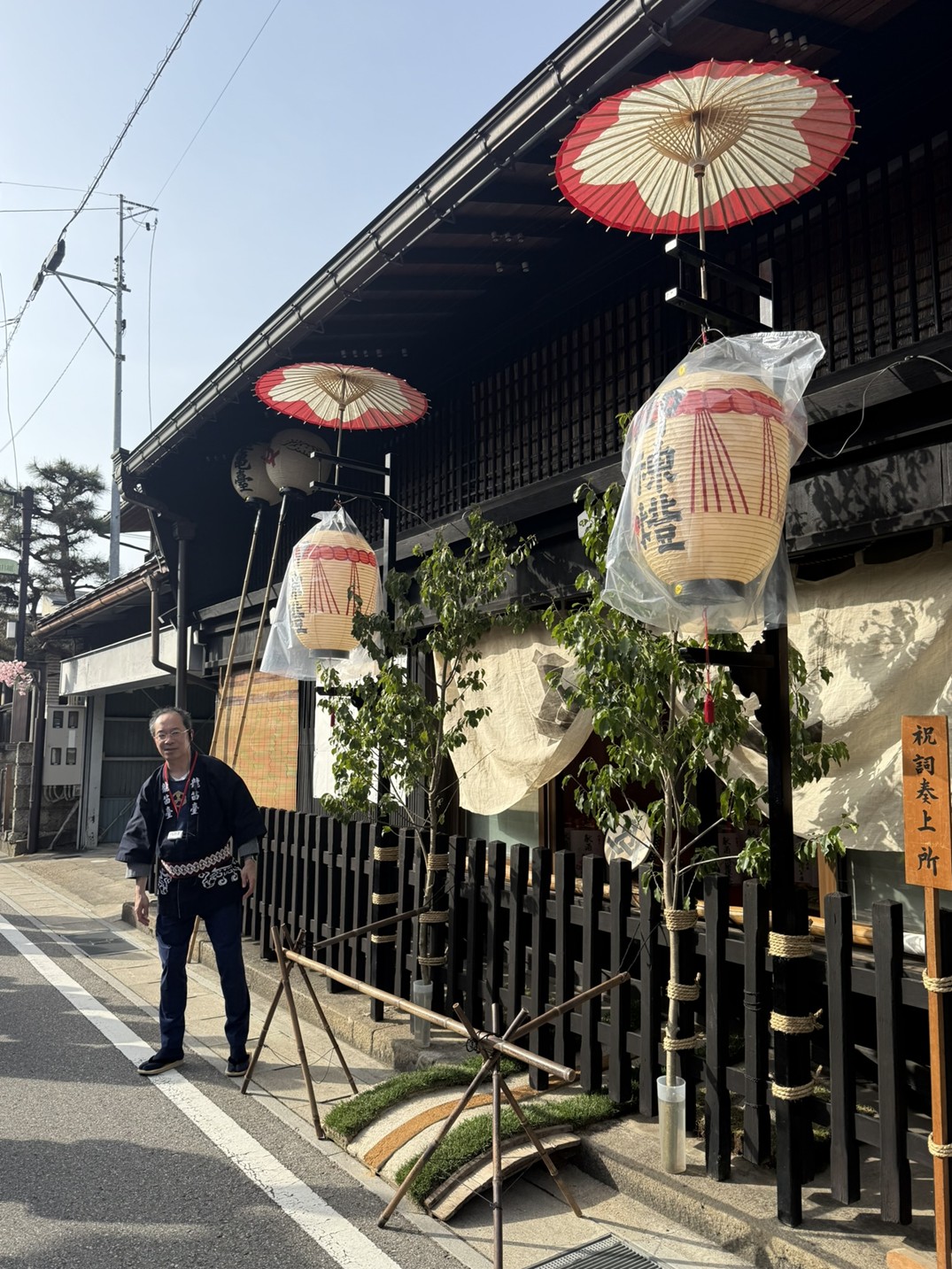
The nighttime festivities take place from around 8 PM until midnight. Everyone first gathers at a location known as the Festival Square (Matsuri Hiroba). At the center is the “Okoshi Daiko”, a massive drum mounted on a tower large enough to carry people. Surrounding it are “Tsuke Daiko”—smaller drums attached to wooden poles—carried by participants from each district. Once the festival begins and the Okoshi Daiko sets off through the town, the various groups follow, vying to get as close to it as possible. Being nearest to the Okoshi Daiko is considered a great honor, so each group shouts out their team names and jostles with others as they proceed. This lively competition is known as “Furukawa Yancha” (“Furukawa Roughhousing”), and although in the past it was said to get quite heated and wild, Furukawa remains an impressively safe and orderly town—this kind of festival seems to foster a strong sense of unity among its people.
Before the “Okoshi Daiko” departs from Festival Square, a performance known as “Tonbo”(“Dragonfly”) takes place. Atop the wooden poles holding the “Tsuke Daiko”, participants climb up and strike a dramatic pose with their arms and legs spread like a dragonfly. One might assume this is part of a sacred ritual, but it actually originated when someone began doing it out of boredom during the waiting time—now it has become a crowd-pleasing tradition, with each district’s young men taking turns to perform.
Given the towering “Okoshi Daiko” and the elevated “Tonbo” performances, lighting that illuminates from above is essential. Temporary white floodlights are set up on existing tall poles and on top of a structure called the “Otabisho” (a sacred resting place for deities during festivals).
Before the festival began, the visibility of these floodlights felt a little disappointing. However, once the event was underway, they effectively illuminated the height and energy of the Okoshi Daiko and the “Tonbo”, highlighting the brilliance of the participants’ white “sarashi” sashes and enhancing the overall atmosphere. The brightness and positioning of the light sources felt wellsuited for the energetic start of this festival.
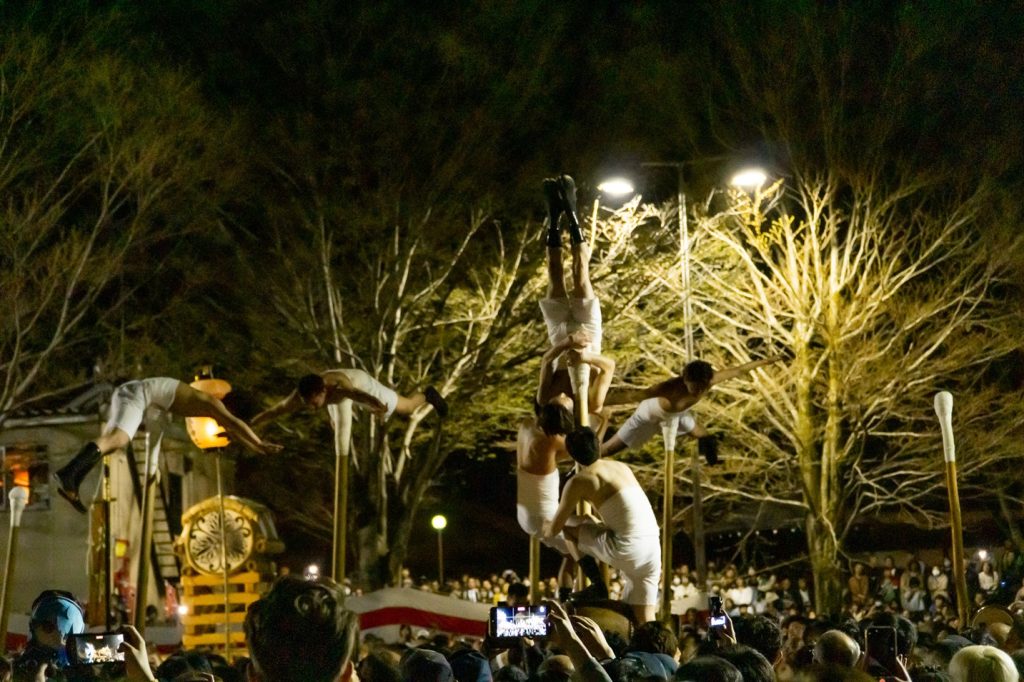
to perform the “tonbo” (dragonfly pose)
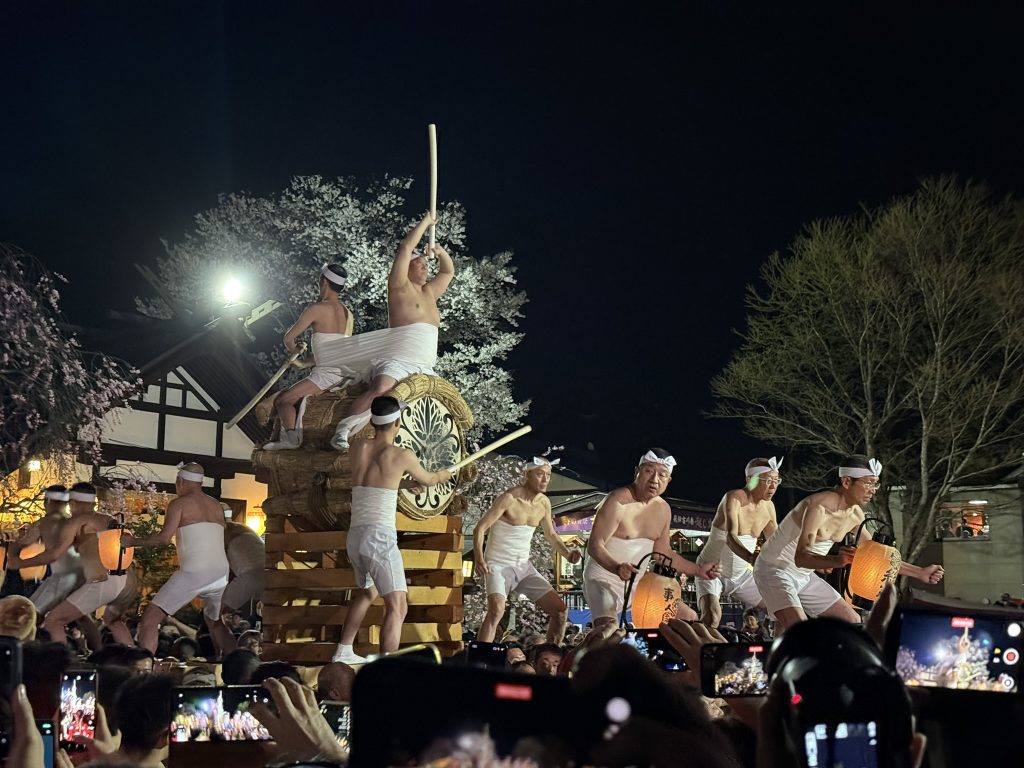
Once the “Okoshi Daiko” departs from the Festival Square, townspeople carrying lanterns lead the way, with the “Okoshi Daiko” following behind. Each person carries a long pole tipped with a redand-white paper lantern. What was truly surprising was that inside every lantern burned an actual candle flame. Seeing such a large number of children and adults walking with lanterns in hand made it clear how much the townspeople look forward to the festival.
Among the crowd were also large lanterns representing each group, some attached to bamboo poles about three meters tall. Unlike the smaller lanterns, the movement of their light and their color seemed different, so we speculated they might be using LEDs. However, one of the bearers noticed our curiosity and kindly showed us the candle inside. It was a traditional “wa-rōsoku” (Japanese candle), thick with a large wick, providing a long-lasting, stable flame. The smaller lanterns used the more commonly seen thin candles, and while their flame color appeared similar, the difference in hue might have been due to the type or thickness of the washi paper used in the lanterns.
As a side note, the lantern I was carrying had a poorly fixed candle inside, which tipped over and caught fire. Only one other person and I seemed to experience this, and even children handled their lanterns with such ease that there was no real sense of danger—it was clear the townspeople were quite accustomed to this tradition.
Lighting each candle with care is itself a sacred act, symbolically receiving fire from the gods, and it greatly enhances the festive atmosphere and emotional excitement. I felt that this ritual, too, was an essential element of the festival’s lighting. I was deeply moved by how the people of Furukawa cherish every detail in this way.
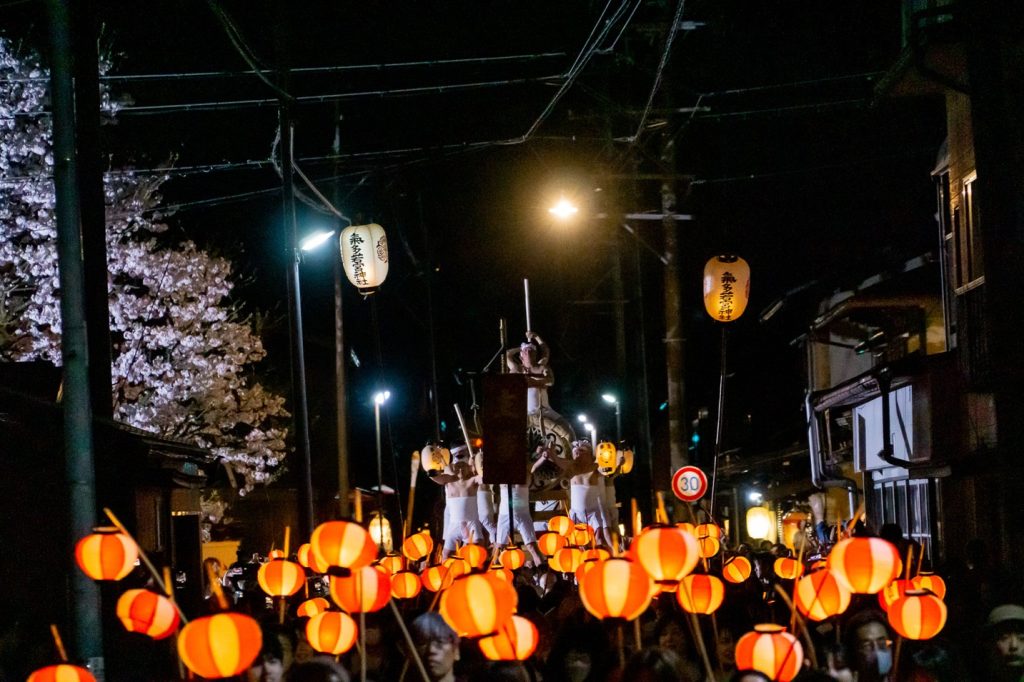
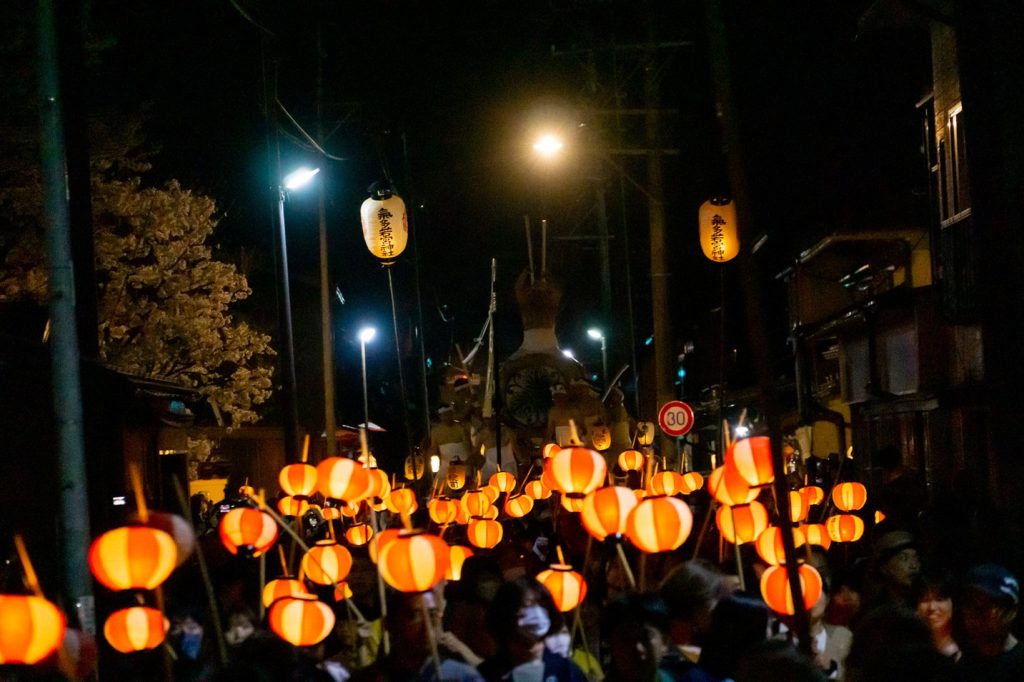
and shadowed without illumination
After the “Okoshi Daiko” left the Festival Square, although many people were carrying handheld lanterns, the tall drum itself appeared somewhat dim and sunken in the dark. It felt like such a missed opportunity not to fully showcase the impressive sight of the “Okoshi Daiko” moving through the beautiful townscape. At one point, someone’s camera flash lit up the scene, and the “Okoshi Daiko” floated momentarily within the sea of lanterns. That brief flash captured a bold and striking image of the drum, and I thought it might be interesting if there were a path of light that illuminated the “Okoshi Daiko” at key moments—like a “hanamichi” on a stage. Since this is a night festival, light plays a major role, for better or worse, depending on the timing.
These days, culture and history are often preserved in a more formal, static way. But in Furukawa, the festival is cherished because the townspeople genuinely look forward to it. That spirit may come from the way they treat even a single candle with care. I sincerely hope that this townscape—one that the townspeople can love—continues for many years to come. (Hikaru Kimura)
